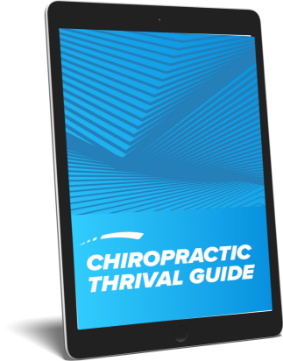By Dr. Christopher Kent
Evans describes anterior subluxation of the cervical spine as a condition caused by flexion-rotational trauma. In this paper, it was noted that the instability resulting from anterior cervical subluxation may result in neurological sequellae and increasing displacement.[1]
Sher defines “subluxation” as “anterior displacement of a vertebra in relation to the vertebra below, when the two apophyseal joints remain in contact.” Dislocation is said to occur when the articular facets of the apophyseal joints are no longer in contact.[2]
Green et al states that anterior displacement of 1 mm to 3 mm indicates subluxation, while displacement in excess of 3.5 mm indicates frank dislocation or fracture. Green et al list six specific radiographic manifestations of anterior cervical subluxation:
1. Kyphous deformity at the level of subluxation.
2. Anterior rotation and/or displacement of the subluxed vertebra.
3. Anterior narrowing and posterior widening of the involved disc space.
4. Localized increase in distance between the subluxed vertebra and subjacent articular masses.
5. Alteration of configuration of interfacetal joints.
6. Abnormal widening of interspinous space.
The authors note that these manifestations are accentuated in flexion, and minimized or eliminated in extension. Thus, there is movement beyond the normal physiologic range.[3]
Although medical authorities acknowledge that neurological complications may occur as a result of subluxation, classical chiropractic definitions mandate the presence of a neurological component.
According to Stephenson [4] the following must occur for the term “vertebral subluxation” to be properly applied:
1. Loss of juxtaposition of a vertebra with the one above, the one below, or both.
2. Occlusion of an opening.
3. Nerve impingement.
4. Interference with the transmission of mental impulses.
Compression of neural structures may involve nerve roots or the spinal cord. Root compression leads to radiculopathy causing pain of dermatomal distribution. In cord compression (myelopathy) slowly developing muscular weakness, atrophy, and fasiculations appear in the upper extremities. There is typically little or no pain. Spastic paraparesis with decreased proprioception and loss of vibration sensation in the lower extremities may result from cervical cord pressure.[5]
According to Hayashi et al dynamic canal stenosis occurs most commonly in the upper disc levels of C3/C4 and C4/C5.[6]
Payne and Spillane found that myelopathy was more likely to occur in persons with congenitally small spinal canals who subsequently develop spondylosis.[7]
In such persons, anterior cervical subluxation may catalyze a cascade of neuropathic processes involving root compression, myelopathy, and interference with arterial supply.[8,9]
Anterior cervical subluxation was described in the medical literature decades ago. Yet many clinicians, both M.D. and D.C. fail to recognize its significance. The radiographic findings described above should be carefully reviewed. Appropriate chiropractic care may then be initiated.
References
1. Evans DK: “Anterior cervical subluxation.” J Bone Joint Surg (Br) 58(3):318, 1976.
2. Scher AT: “Anterior cervical subluxation: an unstable position.” AJR 133:275, 1979.
3. Green JD, Harle TS, Harris JH: “Anterior subluxation of the cervical spine: hyperflexion sprain.” AJNR 2:243, 1981.
4. Stephenson RW: Chiropractic Text-book. Palmer School of Chiropractic. Davenport, IA, 1927.
5. Wyngaarden JB, Smith LH (eds): “Cecil Textbook of Medicine,” 16th edition. Saunders. Philadelphia, PA, 1982. Pages 2148-50.
6. Hayashi H, Okada K, Ueno R: (Etiologic factors of cervical spondylotic myelopathy in aged patients-clinical and radiological studies.) Nippon Seikeigeka Gakkai Zasshi 61(10):1015, 1987. (Published in Japanese-English abstract).
7. Payne EE, Spillane JD: “The cervical spine. An anatomico-pathological study of 70 specimens (using a special technique) with particular reference to the problem of cervical spondylosis.” Brain 80:571, 1957.
8. O’Connell JE: “Involvement of the spinal cord by intervertebral disc protrusions.” Br J Surg 43:225, 1955.
9. Taylor AR: “Mechanism and treatment of spinal cord disorders associated with cervical spondylosis.” The Lancet 1:717, 1953.

























































































































































